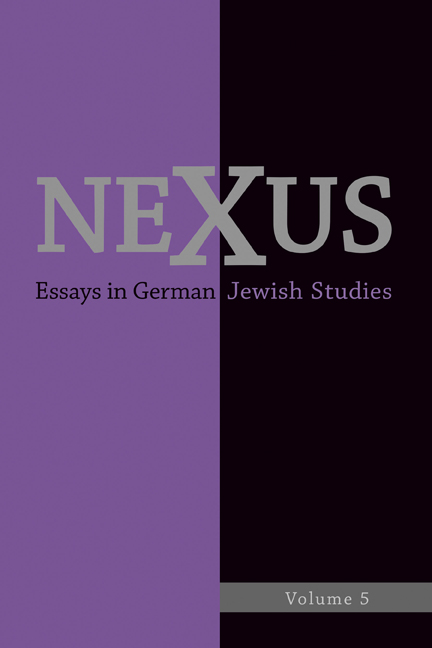 Nexus: Essays in German Jewish Studies, Volume 5
Nexus: Essays in German Jewish Studies, Volume 5 Published online by Cambridge University Press: 24 March 2021
for Jonathan
The following essay was presented as the keynote lecture at the “Moments of Enlightenment” symposium. It was written as a conversation with the audience, and also as a conversation I would have liked to have had with Jonathan Hess. Jonathan and I shared common research interests in the Enlightenment and in German Jewish Studies. We also shared, I think, a deep appreciation for children's books, and certainly a deep appreciation for Harry Potter and its innovation. For these reasons I felt that these comments about Maurice Sendak's tremendously creative illustrations for Wilhelm Grimm's tale Dear Mili would be a fitting tribute to Jonathan. Sendak once wrote that “My best friends in the profession are people I rarely see but whose natures and work I love.” Jonathan was precisely this type of best friend in the profession to me.
Sendak's illustrations for Dear Mili are stunning in their complexity and their artistry. In the course of my research for this project, I have come to understand that Sendak drew heavily on multiple sources in his work. His illustrations are often profoundly personal, and resonate on many different levels. The images in one illustration come together and cohere; they do not necessarily resolve in a single meaning or a clear message. They are visual poems that work as multiplicity, and they are, very simply, beautiful. The German poet and philosopher Friedrich Schiller famously said of Beauty, “its whole magic resides in its mystery, and in dissolving the essential amalgam of its elements we find we have dissolved its very Being.” In what follows, I present an analysis of but one aspect of Sendak's beautiful illustrations, and in so doing I hope not to have dissolved their magic or their mystery.
MAURICE SENDAK once described his book illustrations as “visual poems,” suggesting their inherent lyrical resonance, and in a seminal essay from 1964, “The Shape of Music,” he identifies a “quickening,” an animating, rhythmic, impulsive musical principle as a key source that inspires his artwork. “For me,” Sendak writes, “to conceive musically means to quicken the life of the illustrated book”; “To quicken means, for the illustrator, the task of first comprehending the nature of his text and then giving life to that comprehension in his own medium, the picture.”
To save this book to your Kindle, first ensure no-reply@cambridge.org is added to your Approved Personal Document E-mail List under your Personal Document Settings on the Manage Your Content and Devices page of your Amazon account. Then enter the ‘name’ part of your Kindle email address below. Find out more about saving to your Kindle.
Note you can select to save to either the @free.kindle.com or @kindle.com variations. ‘@free.kindle.com’ emails are free but can only be saved to your device when it is connected to wi-fi. ‘@kindle.com’ emails can be delivered even when you are not connected to wi-fi, but note that service fees apply.
Find out more about the Kindle Personal Document Service.
To save content items to your account, please confirm that you agree to abide by our usage policies. If this is the first time you use this feature, you will be asked to authorise Cambridge Core to connect with your account. Find out more about saving content to Dropbox.
To save content items to your account, please confirm that you agree to abide by our usage policies. If this is the first time you use this feature, you will be asked to authorise Cambridge Core to connect with your account. Find out more about saving content to Google Drive.